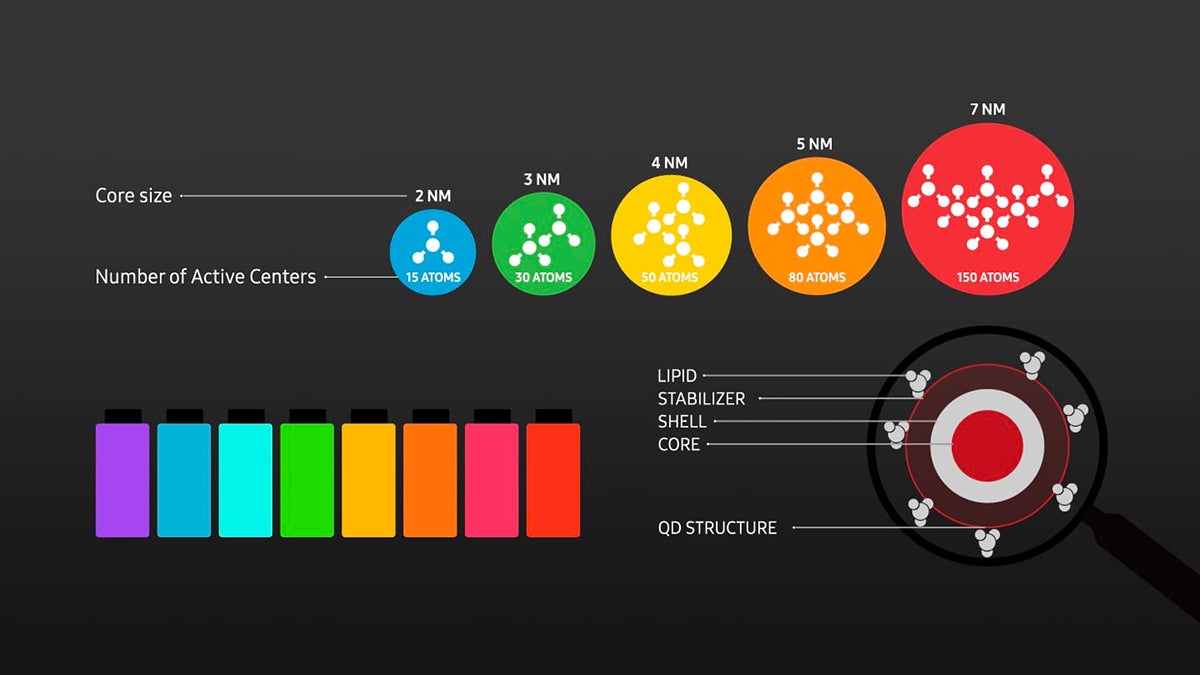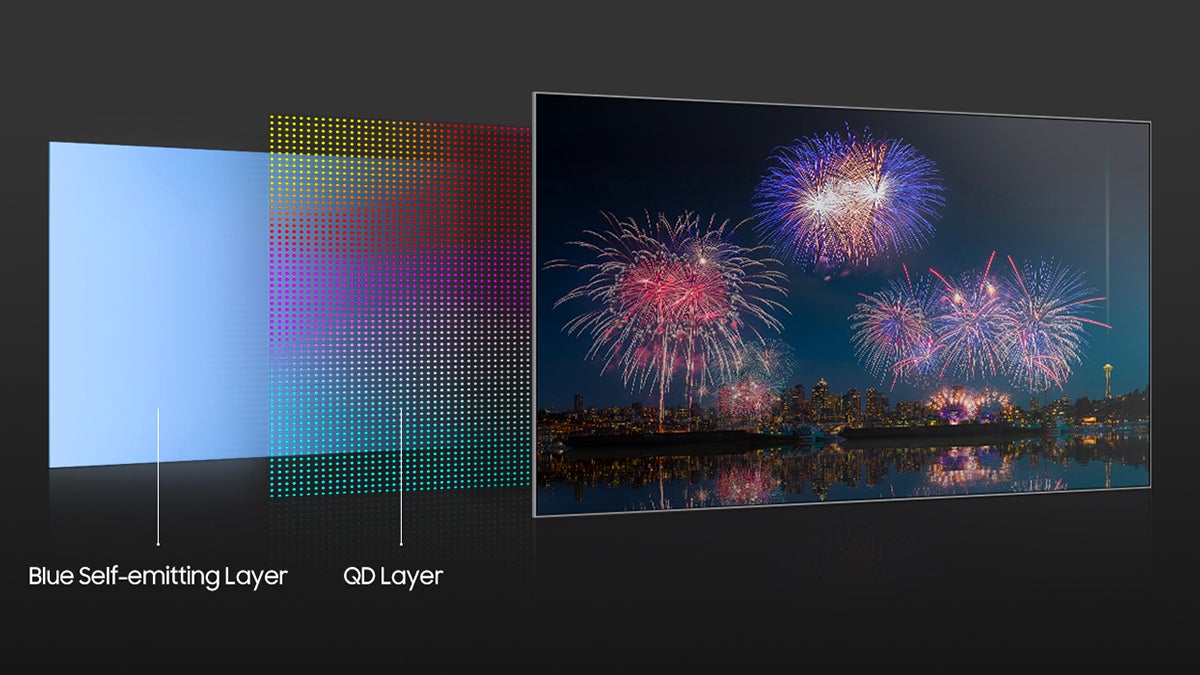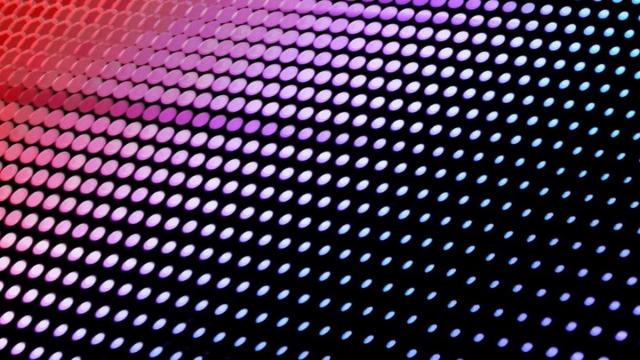Every year at CES, we see innovative TVs. Some are gimmicky — 3D TVs and rollable screens, anyone? — but some are flat-out stunning. This year was all about a new display technology called Quantum Dot OLED (QD-OLED), and it’s definitely different from your standard OLED flat-screen.
Quantum dots are very small semiconductor nano-crystals that glow a specific colour when activated by light, and the technology results in images that are brighter, more vivid, and more accurate and natural in terms of the colours they represent. This technology has been used in television panels for a few years now, but this year is different.
Now TV makers are combining quantum dots with OLED, a superior alternative to LCD-LED that offers deeper blacks and sharper contrast, and that’s where the promise of a whole new level of quality comes from. In theory, it brings the best brightness, the best contrast, the most vivid colours, and the deepest blacks possible: think QLED meets OLED.
Developed primarily by Samsung but available in devices made by other manufacturers too, the nano-sized particles in QD-OLED are slightly different sizes — between 2 nanometres and 10 nanometres — which affects the wavelengths they emit and therefore the colours they show when light goes through them.

The quantum dots sit on a separate layer, in front of an OLED layer emitting blue light, converting pixels to red and green where necessary. Each pixel is essentially converted into three subpixels, covering red, green and blue. All of this can be fitted in a very compact layer.
The new technology comes with a lot of advantages. The quantum dots are very power efficient, for example, which enables them to hit higher levels of brightness, and they’re also very stable — something that has been a problem for OLED displays in the past (and burn in should also be less of an issue). Another benefit of QD-OLED is minimal light bleed between pixels, so white text on a black background will look perfectly crisp and sharp, without any haze around it.
QD-OLED should ensure colours don’t get washed out in bright zones, while in zones that are darker, colours will remain accurate and well-defined. Viewing angles should remain impressive, while motion blurring and ghosting are reduced. You can see why the display tech is getting a lot of hype: It promises to upgrade a lot of different aspects of the viewing experience.
Remember that OLED (organic light-emitting diode) panels use pixels that emit their own light individually, which offers more precision compared to the LCD-LED panels that use a backlighting system. Over time, the gap between these two technologies has narrowed, thanks partly to quantum dots — LCD-LED displays have evolved to use multiple dimming zones rather than one large backlight — but OLED is still capable of producing better contrast and blacker blacks.
Brightness levels could be boosted significantly with QD-OLED over conventional OLED, while colour gamut coverage is about on par, according to early reports. It remains to be seen whether brightness levels can beat the best that LCD-LED has to offer. Competing technologies like OLED and mini-LED are getting better all the time as well, and we saw many improvements in these technologies at CES 2022.

There are some drawbacks to QD-OLED panels, too, of course, primarily price: These QD-OLED panels, like OLED panels before them, will cost you more than equivalent LCD-LED displays. These panels can’t be practically manufactured at smaller sizes either (for the time being), so it’s going to be a while before we see QD-OLED make its way into phones and tablets — if ever.
Other QD-OLED products are coming down the pipe, though. Alienware has already unveiled a new curved gaming monitor with a QD-OLED panel, though we don’t yet know how much it’s going to cost (spoiler alert: probably a lot). The technology is coming to Sony TVs in 2022 as well, and again pricing has yet to be announced. And we know Samsung has a QD-OLED display in the pipeline, but as yet very few specifics have been confirmed.
There are some questions remaining about QD-OLED, and we will of course have to see it in actual products to judge exactly how it compares to OLED and LCD-LED, but at first glance it looks like a promising display upgrade that’s worth looking out for this year — even if none of us can afford it.
